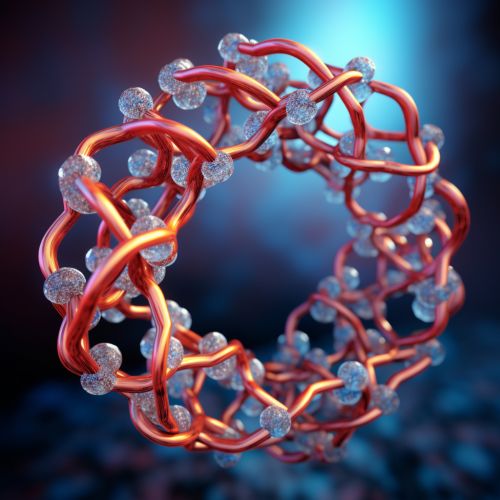Protein Design
Introduction
Protein design is the rational design of new proteins or redesign of existing ones. It is a specialized field in protein engineering where researchers use computational tools to generate proteins with improved or novel functions. The goal is to understand protein folding, stability, and function, and to create proteins that can serve as drugs, catalysts, or materials in various industries.
History
The field of protein design has its roots in the early 1980s, when scientists began to understand the principles of protein folding and stability. The first successful designs were simple proteins with a small number of amino acids. As computational power increased and algorithms improved, researchers were able to design more complex proteins. The field has grown rapidly in the past decade, with advances in both computational and experimental methods.


Principles of Protein Design
Protein design is based on the principles of protein structure and function. Proteins are made up of amino acids, which fold into a specific three-dimensional structure. The structure of a protein determines its function, and changes in the structure can alter the function. In protein design, researchers use these principles to create proteins with desired properties.
Protein Structure
Proteins are composed of one or more chains of amino acids. These chains fold into a specific three-dimensional structure, which is determined by the sequence of amino acids. The structure of a protein is stabilized by various types of interactions, including hydrogen bonds, ionic interactions, and hydrophobic effects.
Protein Function
The function of a protein is determined by its structure. Proteins can act as enzymes, transporters, signaling molecules, structural components, and more. In protein design, the goal is to create a protein that performs a specific function. This can be achieved by modifying the structure of an existing protein or designing a new protein from scratch.
Methods of Protein Design
There are several methods used in protein design, including computational design, directed evolution, and de novo design.
Computational Design
Computational protein design uses computer algorithms to predict the sequence of amino acids that will fold into a desired structure. These algorithms take into account the principles of protein structure and stability, and can be used to design proteins with a wide range of functions.
Directed Evolution
Directed evolution is a method of protein design that mimics natural evolution. It involves generating a large library of protein variants, and then selecting the ones with the desired properties. This method can be used to improve the function of existing proteins or to discover new functions.
De Novo Design
De novo protein design involves designing a protein from scratch, without using an existing protein as a template. This method allows for the creation of novel proteins with functions that may not exist in nature.
Applications of Protein Design
Protein design has a wide range of applications, from medicine to materials science.
Medicine
In medicine, protein design can be used to create novel drugs and vaccines. For example, designed proteins can be used to target specific cells or molecules in the body, offering a potential treatment for diseases such as cancer, autoimmune disorders, and infectious diseases.
Industry
In industry, designed proteins can serve as catalysts, making chemical reactions more efficient and environmentally friendly. They can also be used to create new materials with unique properties.
Research
In research, protein design can help scientists understand the principles of protein structure and function. It can also be used to test theories of evolution and to explore the limits of protein diversity.
Future of Protein Design
The field of protein design is still in its early stages, but it has the potential to revolutionize many areas of science and technology. As computational power increases and algorithms improve, researchers will be able to design more complex proteins with a wider range of functions. The challenge will be to translate these designs into real-world applications, and to ensure that designed proteins are safe and effective.
